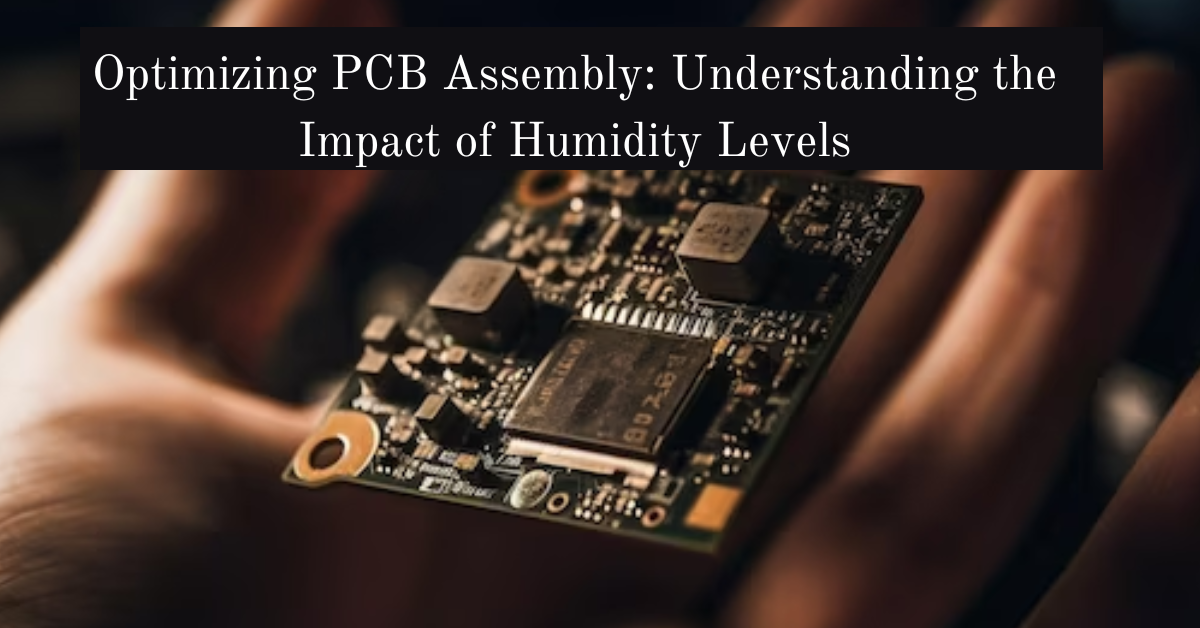In the realm of printed circuit board (PCB) assembly, achieving optimal performance and reliability hinges on mastering various environmental factors, including the often underestimated yet critical element of humidity. This article explores into the intricate relationship between humidity levels and PCB assembly processes, offering insights on how understanding and managing humidity, along with incorporating precise PCB layout services, can significantly impact the quality and functionality of electronic components.
The Basics of Humidity in PCB Assembly
Humidity, the measure of moisture in the air, plays a important role in the manufacturing of PCBs. Its impact extends to multiple stages of the assembly process, influencing the behavior of materials, components, and soldering techniques. From storage and handling to the final soldering process, maintaining an optimal humidity environment is crucial for ensuring the reliability and longevity of the assembled PCB.
Effects of High Humidity on Components
High humidity can introduce a host of challenges in the PCB assembly process. Moisture absorption by components and PCBs themselves can lead to issues such as soldering defects, compromised electrical performance, and even long-term reliability concerns. This section explores the specific effects of elevated humidity levels on various components and the overall assembly process.
Preventing Moisture-Related Defects
To optimize PCB assembly, proactive measures must be taken to prevent moisture-related defects. This involves emphasizing the importance of storage conditions, moisture-sensitive device handling, and the integration of moisture barrier packaging for effective humidity control in manufacturing environments. Implementing these strategies, along with expert PCB design services, can significantly mitigate the risks associated with high humidity during the assembly process.
Low Humidity and Electrostatic Discharge (ESD) Risks
While high humidity poses its challenges, low humidity can also impact PCB assembly. Insufficient humidity levels increase the risk of electrostatic discharge (ESD), potentially causing damage to sensitive electronic components. This highlights the delicate balance required to maintain humidity levels that prevent moisture-related defects without exposing the assembly process to ESD risks. Precision in environmental control is crucial in this regard, especially for users of OrCAD PCB Designer, who rely on such software for efficient and accurate PCB layout and design.
Humidity Control Solutions in PCB Manufacturing
Advancements in technology have given drift to sophisticated humidity control solutions designed specifically for PCB manufacturing environments. From controlled humidity storage cabinets to automated humidity monitoring systems, this section outlines the range of tools available to manufacturers aiming to optimize their assembly processes and enhance the overall quality of their electronic products.
Looking Ahead: Innovations in Humidity Management
As technology evolves, so do the tools available for humidity management in PCB assembly. This final section explores emerging innovations, including smart humidity control systems and environmentally controlled cleanroom technologies, such as those integrated with Allegro PCB solutions. These advancements hold the potential to further revolutionize the optimization of PCB assembly processes, ensuring a seamless and controlled environment for enhanced precision and reliability in electronic component manufacturing.
In conclusion, optimizing PCB assembly involves a nuanced understanding of the impact of humidity levels throughout the manufacturing journey. By implementing effective humidity control strategies and staying abreast of technological innovations, manufacturers can enhance the reliability, performance, and longevity of their electronic products.

